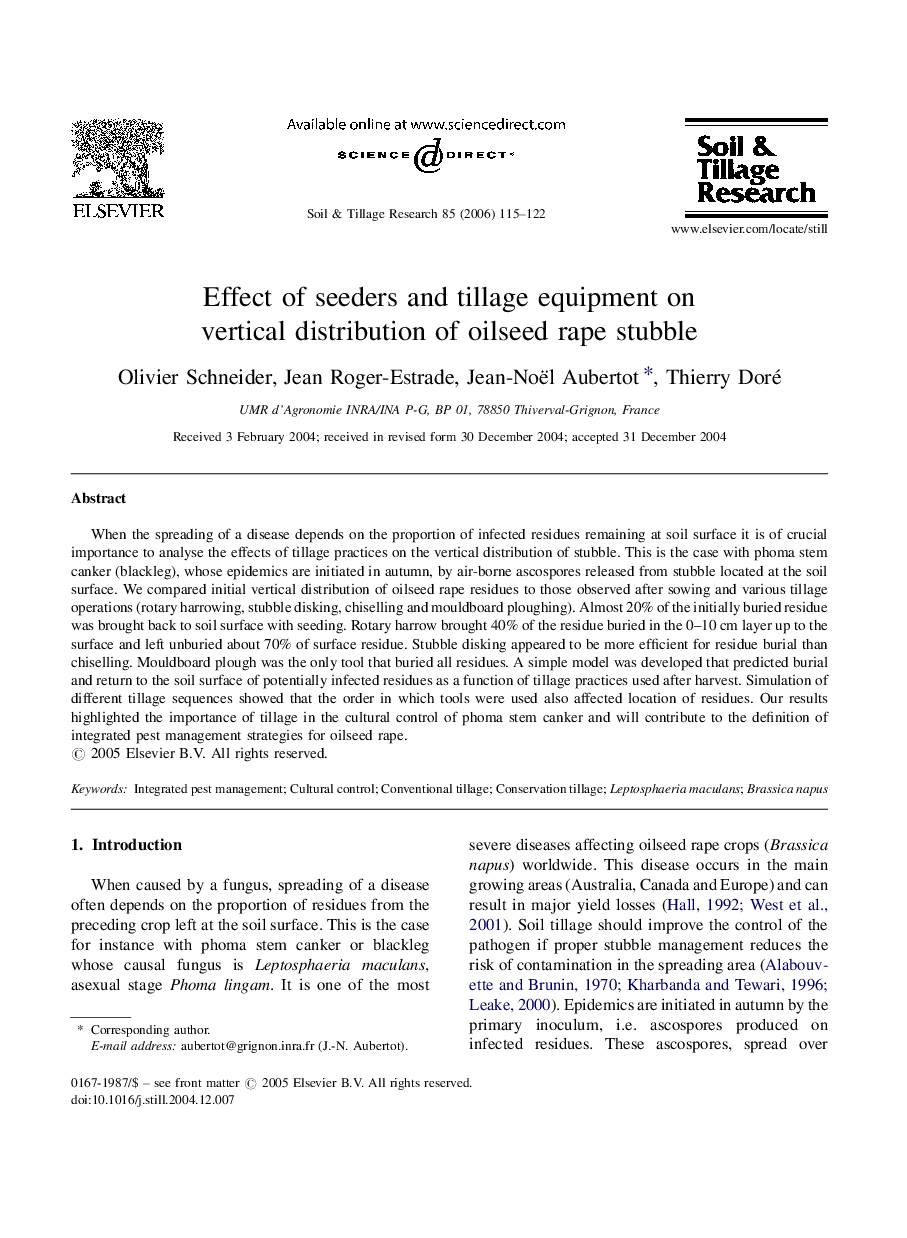| کد مقاله | کد نشریه | سال انتشار | مقاله انگلیسی | نسخه تمام متن |
|---|---|---|---|---|
| 306929 | 513125 | 2006 | 8 صفحه PDF | دانلود رایگان |

When the spreading of a disease depends on the proportion of infected residues remaining at soil surface it is of crucial importance to analyse the effects of tillage practices on the vertical distribution of stubble. This is the case with phoma stem canker (blackleg), whose epidemics are initiated in autumn, by air-borne ascospores released from stubble located at the soil surface. We compared initial vertical distribution of oilseed rape residues to those observed after sowing and various tillage operations (rotary harrowing, stubble disking, chiselling and mouldboard ploughing). Almost 20% of the initially buried residue was brought back to soil surface with seeding. Rotary harrow brought 40% of the residue buried in the 0–10 cm layer up to the surface and left unburied about 70% of surface residue. Stubble disking appeared to be more efficient for residue burial than chiselling. Mouldboard plough was the only tool that buried all residues. A simple model was developed that predicted burial and return to the soil surface of potentially infected residues as a function of tillage practices used after harvest. Simulation of different tillage sequences showed that the order in which tools were used also affected location of residues. Our results highlighted the importance of tillage in the cultural control of phoma stem canker and will contribute to the definition of integrated pest management strategies for oilseed rape.
Journal: Soil and Tillage Research - Volume 85, Issues 1–2, January 2006, Pages 115–122